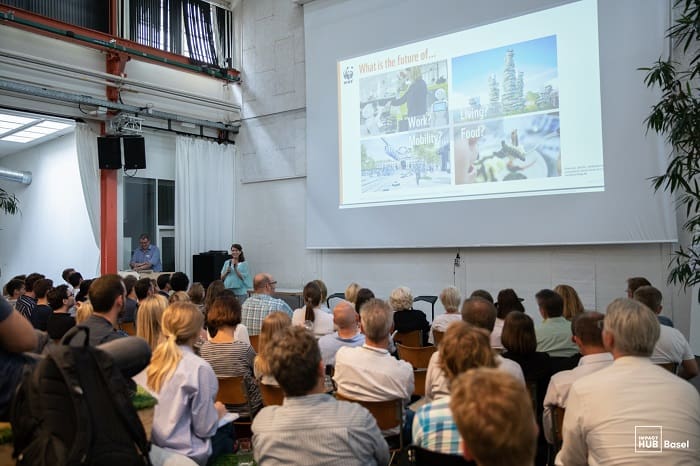Such a fancy title! So what exactly is ‘Business Model Innovation for Sustainability?’ Well, two weeks ago we explored that question and got some answers, with examples of global ideas and local case studies.
And might I say, there was just all kinds of learning going on, people! For instance, I admit, before this event, I didn’t quite know what ‘business model innovation for sustainability’ even was. Hadn’t really ever heard of it or thought about it. Who knows…maybe I live under a rock. So, I was thrilled to learn about it—or more accurately, learn that I actually had been active in business model innovation for sustainability for years—I just didn’t know it’s name!

So, what is business model innovation? According to Harvard Business Review: “Drawing on the idea that any business model is essentially a set of key decisions that collectively determine how a business earns its revenue, incurs its costs, and manages its risks, we view innovations to the model as changes to those decisions: what your offerings will be, when decisions are made, who makes them, and why. Successful changes along these dimensions improve the company’s combination of revenue, costs, and risks.” (Article on Harvard Business Review)
Now add in the sustainability part, and it simply means that those changes also lead to positive environmental and societal impact. Why do we feel this is so important?
Now is probably a good time to bring up the Sustainable Development Goals. You’ve heard us mention them quite a bit. They are our guiding principles, and for good reason. The SDGs cover social and economic development issues including poverty, hunger, health, education, climate change, gender equality, water, sanitation, energy, urbanization, environment and social justice. If we as a society are to meet these goals, then we simply can not continue with business as usual. We must alter the business model as we’ve known it.
Thus, the reason for our last event.

That evening, our partner, World Wildlife Fund, presented on the topic, addressing the ‘what’ and ‘why’ of BMI and showed examples of what ‘sustainability-based changes’ could mean to different sectors. For example, how energy providers can develop new business models for a decentralized, renewable energy future; how a food product manufacturer can make use of what would otherwise be food waste; how we could share mobility and transportation logistics. The possibilities are truly endless, which is one reason why WWF and partner companies are working on a pilot process to develop sustainable business models. In fact, WWF has partnered with Impact Hubs in 17 countries world-wide, combining decades of natural conservation expertise with entrepreneurial action to accelerate environmental innovation. Woo hoo! To learn more about this incredible organization and partnership, start here.
Swisscom also partnered with us for this event, sharing with our audience the company’s awesome “Sustainability Kickbox” program, which fosters social entrepreneurship from within. It encourages anyone and everyone in the company to submit their idea. The mission? To develop new business models with a significant social and environmental impact, and with a clear business case.
So, how does it work? In a teeny-tiny nutshell, it goes a little somethin’ like this—
Loads of ideas get submitted, then the best 100 or so move to the Red Box for further development. From there, about 10 of those progress to the Blue Box. And finally, one or two ideas make their way to the Gold Box, where we find ourselves with a real-life, go-to-market product or service! And all along the way, Swisscom provides not only funding for the development of the idea, but gives the creator 20% of her or his workweek to dedicate to this development! Coaching, experts, support and all that jazz are all part of the package as well.
Very nice!
Now, meet our third partner for the event, SwissShrimp. Years ago, Rafael Weber, Co-owner and Managing Director, had a bone to pick. He loves shrimp. But obviously due to Switzerland’s land-locked location, local, fresh seafood wasn’t usually on the menu. But when it was, he was bothered by how many miles it had to travel to get on his plate. And what about the freshness factor? For those that have sustainability in mind, these things are troubling. So, he began working on a solution. Could he create local, responsible shrimp farming?

After years of work, the answer was a resounding ‘yes!’ By producing shrimp in local aquaculture, SwissShrimp is able to control the source and selection of resources, handle waste water treatment, and are able to offer an ultra-fresh product by harvesting to order. And…no anti-biotics. How refreshing! You can read more about their sustainable solutions here.
So, yeah…now I officially know what ‘business model innovation’ is. And I’ve thought about it a lot. I think about how simple it could be for a business to make some small changes that would actually have a large impact. Or how a far-reaching, powerful industry could create a huge impact with bold changes to it’s business model.
These innovations are out there. We just need to grab them.
Carrie Aikman
